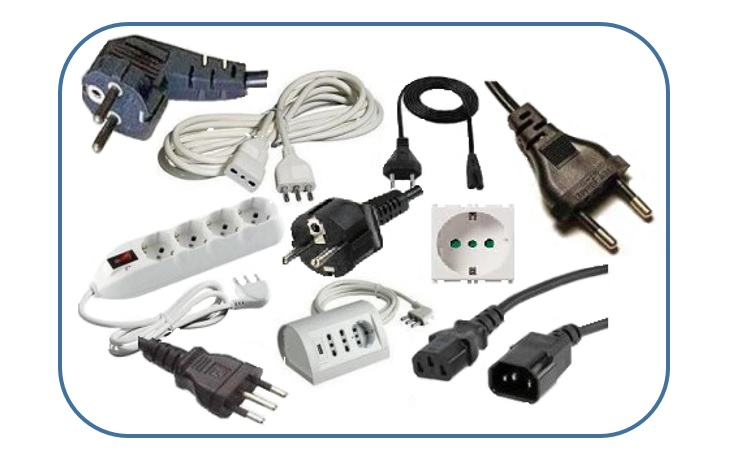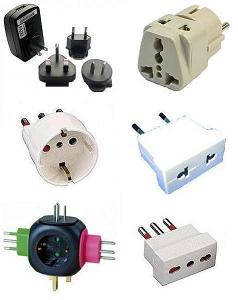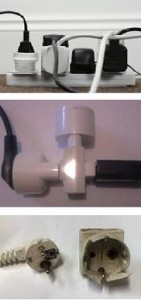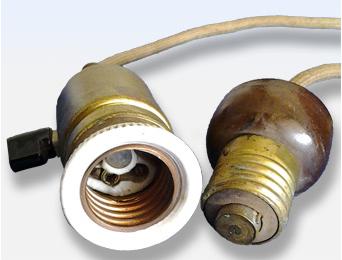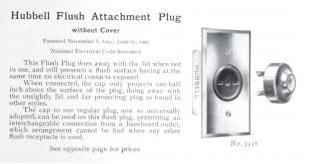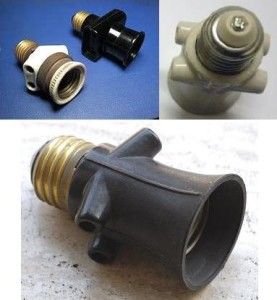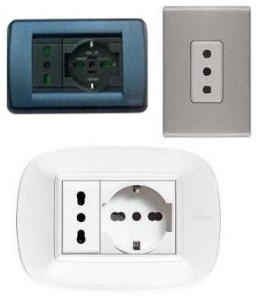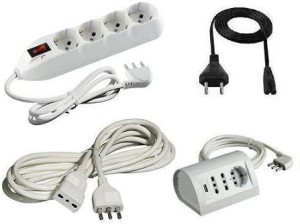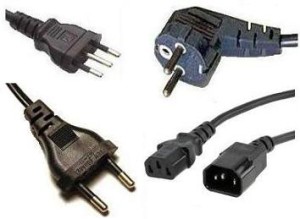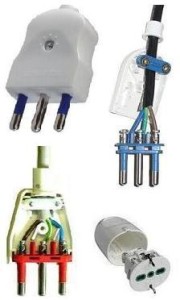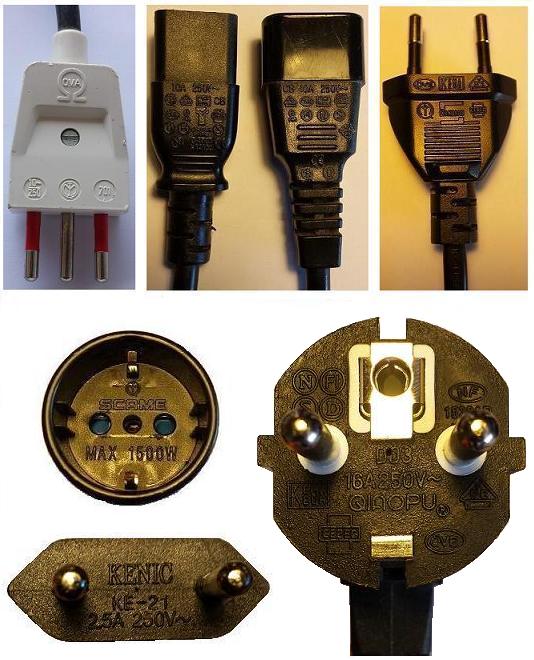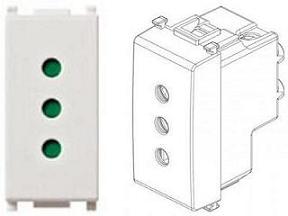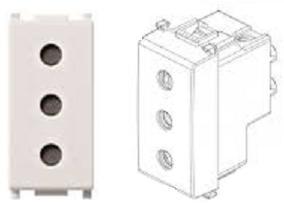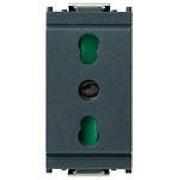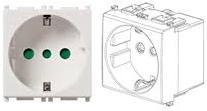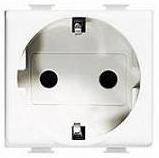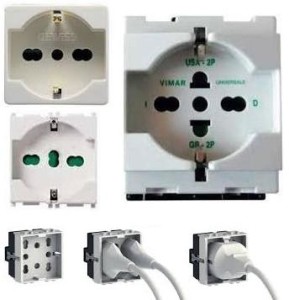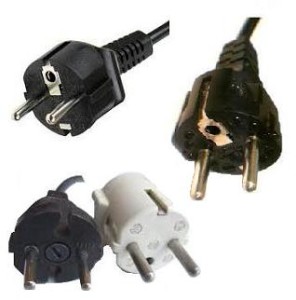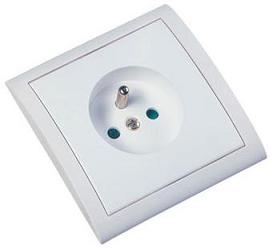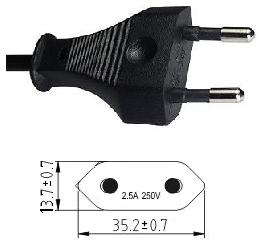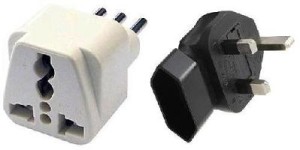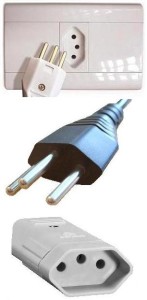Introduction
Unfortunately, even today sockets and plugs for domestic use are electrical components that have not yet undergone any form of unification mainly due to the resistance of the different countries to abandon their system. Almost all countries have their own system of sockets and plugs as a result, the updated list of sockets in use in various countries around the world is available here.
So far, in contrast to the unified industrial electrical sockets according to CEI EN 60309, the European Union has never been in a position to impose rules of unification for household electrical outlets. It follows that all the plugs are exempt from the Low Voltage Directive and the CE marking accordingly.
For example, the Italian plug will fit into the german, swiss or french sockets, only if it is devoid of the central ground contact, while the system of plugs and sockets in England is completely incompatible with those used in the rest of Europe. Furthermore, by examining their functional aspect, plug outlets for household and similar are distinguished mainly by the level of current that can endure and even to this feature, there is no standardization. Each country adopts its own flow rate of current, for example in Italy are used two flows of maximum current 10 A and 16 A.
Because of this total lack of unification, in order to make compatible the plugs of the user equipment and / or appliances of a country with the sockets of another country, adapters of each type are widely spread all over the world: simple, multiple , multistandard outlets, extension cords, multi sockets, often with the creation of situations of extreme danger, such as the use of triple plugs or adapters for plugs from 16A to 10A sockets (see Figure 1 and 2).
A brief history
The first use of electricity in the home was only for lighting environments. The only type of outlet was made up of the lamp holder, so all the appliances were provided at the end of a cable with an attack similar to that of light bulbs that was screwed into the holder in place of the bulb (see Figure 3).
The first true “plug and socket” separable was invented and patented in November 1904 by Harvey Hubbell (1857-1927), American inventor and entrepreneur originally from Bridgetport in Connecticut (see figure 4).
Hubbell descendant of an English family, was a contemporary of the great industrialists like Ford, Edison, Westinghouse, and in the early years of the twentieth century, he has greatly contributed to the great development of new mechanical products intended for the welfare of humanity.
In the following years his invention was used, especially for making lampholders with more taken in consequence of the fact that most of the distributors of electric power of the time applied a cheaper rate for electricity for lighting, see figure 5, until the implementation of modern plug sockets especially after the unification of electricity tariffs.
The CEI 23-50
As regards Italy, the domestic plugs and sockets are covered by CEI 23-50 “Plug sockets for household and similar purposes.” The standard provides requirements that relate to the sockets and plugs for household and similar fixed or mobile, with or without ground contact, only for alternating current with a rated voltage above 50 V but not exceeding 440 V and a rated current not exceeding 32 A for both single and three phase circuits (the rated current is limited to 16 a for fixed socket-outlets with screwless terminals), used in both indoor and outdoor ones.
The standard also applies to multiple outlets, extension cords and sockets installed on the equipment, but it does not apply to the plugs can not be removed with bipolar maximum current of 2.5 A and 250 V voltage related to class II. The CEI 23-50 also provides guidance on the requirements of grounding, in particular, it states that the pin relating to ground should make contact with the ground socket on the socket before the pins on which it is exercised electrical voltage; it follows that by removing the plug from the socket, first the connection of the active centers must be disconnected, last the connection to the ground.
The standard divides electrical sockets in these categories:
– Fixed, they are connected permanently to the system without any possibility of displacements, (see figure 6);
– movable, they are connected to the system via a cable such as extension cords (see Figure 7);
– Not removable, they are made in a single block-cast so as to form a single element with the cable ( see Figure 8);
– Removable, they are composed of different modular elements and are equipped with terminals that allow the replacement of the cable (see figure 9).
The plugs and sockets must be provided, clearly and prominently, with the following marking (see Figure 10):
- rated voltage in volts and current type symbol;
- rated current in A;
- degree of protection if higher IP20;
- maker’s mark and initials of the catalog.
They must also comply with the following features:
- insulation resistance not less than 5 Megohm;
- sealing of each pin is not less than 1.5 N for sockets 10 A and 2 N to 16 A sockets;
- bear no less than 5000 connections and disconnections;
- extraction force of the plug from the socket of not more than 40 N for the type 2P 10 A and 54 N for the type 2P + T 16 A;
- wall outlets must be installed at a minimum height of 175 mm above the finished floor, outlets skirting at a minimum height of 70 mm, outlets tower at a minimum height of 40 mm.
The italian system of electrical outlets
The Italian system of plugs and sockets for domestic use includes:
– P11 sockets, capable of accepting the corresponding plugs comb 10 A 250 V with cylindrical pins of 4 mm diameter and 19 mm pitch (in Figure 11 a socket P11 Vimar);
– P17 sockets, capable of accepting the corresponding plugs comb 16 A 250 V with cylindrical pins of 5 mm diameter and 26 mm pitch ( in Figure 12 a socket P17 Vimar);
– P17/11 sockets or more generically defined bypass divalent, capable of accepting both 10 A and 16 A plugs ( in Figure 13 a socket P17 / 11).
– P30 sockets, an adaptation of the sockets generically known as Schuko of German origin, are a type of socket that can accommodate both the Schuko plug and Italian 10A plugs with ground. In fact, the original German Schuko lacks a central hole and does not accept the Italian plugs with the ground. Furthermore, the two active holes are slightly larger in diameter (the diameter of the pins of the 10A italian plugs is slightly smaller than those of the Schuko plug). Figure 14 and Figure 15 shows, respectively, a P30 socket and a P30 plug for the German standard;
– Sockets multistandard, they allow the use of plugs for both Italian and in other countries. Their function of universality, however, in some cases, may seriously compromise the safety such as the ability to touch the contact of the plug or to provide a lower contact surface with positioning in the possibility of overheating. Figure 16 shows some of the multi-standard sockets Gewiss and Vimar and a new type of multi-standard socket “side” that in just two modules allows the insertion of a schuko plug or two plugs from Italian 10/16 A.
The sockets CEE 7/4 (Schuko)
In the absence of an agreement for the adoption of a unified socket at the international level, the Schuko officially defined as CEE 7/4, has emerged as a standard in much of Europe, especially since the corresponding plug has been adopted almost universally as standards by manufacturers of large and small appliances.
In fact, the plug used for household appliances is a European plug mixed German / French (see Figure 17). In fact, the French socket is very similar to German Schuko and is distinguished because the ground is obtained by a pin projecting asymmetrical which makes polarized, phase and neutral can not be reversed (see Figure 18). The Schuko was invented by the German seller of electrical equipment Albert Büttner in 1926 and is characterized by the side contacts for the ground and the edge that prevents contact with the pins during insertion of the plug. The term Schuko, in fact, is nothing but the contraction of the German word “Schutzkontakt” which means “safety contact.”
The latest edition of IEC 64-8 in Chapter 37 “Residential, plant performance,” recommends the installation of Schuko sockets in the kitchen and for the washing machine with the clear objective of limiting the use of adapters especially in case of connection of appliances of high power. But given now, the widespread use of devices with schuko plug as televisions, monitors, computers, large and small appliances, etc. it is appropriate to extend the installation of P30 sockets in any room of the home and office.
The Europlug
Another very widespread plug in Europe is the Europlug. The only plug defined by a European standard, EN 50075. This is a plug that lacks of the ground and it has the characteristic shape of an elongated hexagon. It is usable for a maximum current of 2.5 A, only suitable for powering small devices isolated class II such as televisions, hi-fi, small appliances. The Europlug, which is very similar to Italian plug 10 A with no center pin for ground, was designed in 1963 by the abbreviation CEE 7/16, by the IECEE (International Commission on Rules for the Approval of Electrical Equipment) to can be inserted in most of the existing European national sockets, except for the British for which there are, however, special adapters ( see figure 19 and 20).
The IEC 60906-1 socket (type N)
In 1986, the IEC (International Electrotechnical Commission) with the standard IEC 60906-1 defined a new plug system 250 V-16 A per household. This system is expected to become the universal standard unified. The new socket IEC60906-1 N type is very similar to the socket Italian 10 A and the Swiss but incompatible with both, using pins of diameter 4.5mm, length 19 mm, 19 mm distance, and the center pin of the earth is slightly off-axis so as to ensure the irreversibility of the plug.
The socket is recessed as the Schuko so the active pins are not accessible during insertion and extraction. Moreover the holes can be provided with special retractable screens in order to avoid possible insertions metal wires or other objects, especially by children. It is usable for currents up to 16 A and a maximum voltage of AC 250 V. Unfortunately, until now, only two countries have adopted the socket IEC 60906-1 Brazil with two versions from 10 A and 20 A with designation NBR14136, and South Africa with the full version 15 A 250 V designation SANS 164-2, Figure 21, some types of plugs and sockets IEC 60906-1..
[:]
